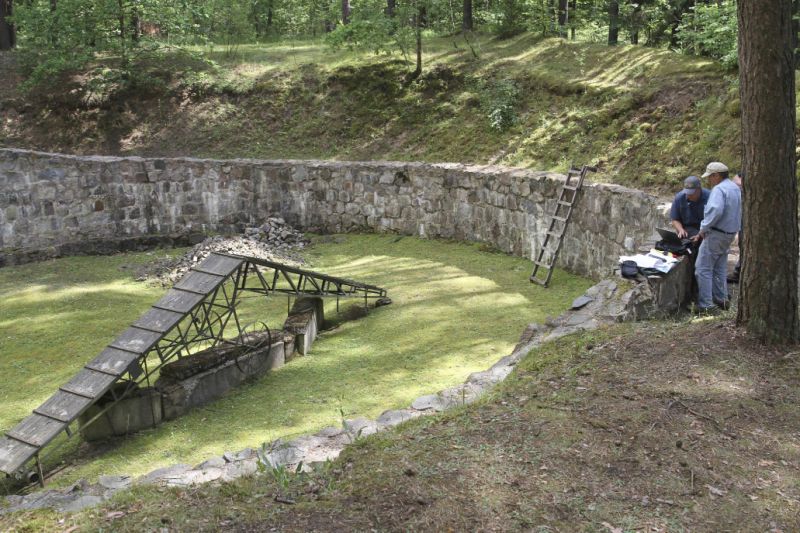Escape Tunnel During Holocaust Is Found
One of the best parts of Shawshank Redemption was when Andrew Dufresne dug a tunnel with a simple rock hammer. It was what helped him escape and gave the movie one of the most vindicated endings in cinematic history.
if only all Jewish prisoners had been this lucky during the Holocaust.
According to the Israel Antiquities Authority, an international research team has just found the location of a legendary tunnel that Jewish prisoners secretly dug out with spoons.
The team of archaeologists, geophysicists and Jewish historians are from Israel, the United States, Canada and Lithuania.
Pinpointed in a Lithuanian forest, it was the prisoners’ way to escape Nazi captors during World War II.
The tunnel, which is located in the Ponar forest, known today as Paneriai, is just outside of the Lithuanian capital of Vilnius.
The site is where some 100,000 people, including 70,000 Jews, were killed and thrown into pits during Nazi occupation.
In an effort to not want to disturb any human remains in the mass burial pits at the site, researchers used scanning technology called electrical resistivity tomography that minieral and oil exploration companies use. With this technology they were able to map out the 34-meter long tunnel.
“To find a little glimmer of hope within the dark hole of Ponar is very important as humans,” said Jon Seligman, an archaeologist with Israel’s antiquities authority, who participated in the expedition.
“The tunnel shows that even when the time was so black, there was yearning for life within that,” he added.
Towards the end of World War II, the Nazis wanted to erase the evidence of the mass killings and Jewish and Soviet prisoners were brought to the Ponar forest from Stutthof concentration camp.
These prisoners, with their legs chained, were forced to dig up the mass graves, collect bodies and then burn them. They were called the Burning Brigade and most likely lived in dreaded fear that once their task was done, they too would be murdered.
One prisoer, Isaac Dogim, even recognized his own wife’s body when piling decomposed corpses. He recognized her by the medallion he had given her for their wedding.
These prisoners were kept in one of the pits at night, and for three months they secretly dug an underground tunnel to escape.
On April 15, 1944, in the middle of the night, 40 of the prisoners were able to file off their chains and escaped into the tunnel.
Unfortunately guards discovered them and many were shot. 11 prisoners did manage to escape into the forest and reached partisan forces and survived the war.
“It is a very important discovery, because this is another proof of resistance of those who were about to die,” said Markas Zingeris, director of the Vilna Gaon Jewish State Museum in Vilnius.


